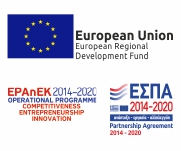Tuesday, 28 January 2020 | By Kostas Kotsiopoulos, Executive Director, Login SA (Member of the Profile Group)
Bank Treasury is facing an optimisation challenge to deliver significant returns on banks’ digital investments, generating long-term competitive and financial advantages, in an increasingly regulated environment.
As a growing number of financial operations move to ‘real-time’, Treasurers need to rethink how they organise and manage treasury functions ensuring that investment in technology can support seamless processes, efficiently.
According to BCG’s research “70% of Treasurers have yet to embrace digitisation in a meaningful way”. Many rely on fragmented data, outdated modeling and analytical tools to optimise balance sheet and risk management. Bank treasurers that embrace digitisation can unlock significant, long-term value, positioning banks to be more strategic, competitive, and financially secure. BCG’s research and benchmarking data found that the digital treasury opportunity could deliver average annual profits of $100 million to $350 million in each of the top 20 banks in North America, Europe, and Asia-Pacific.
Machine learning (ML) techniques and AI are becoming part of treasurers’ daily routine. They offer the advantage to forecast needs and make predictive analysis, as well as help in decision-support, creating greater flexibility and process integration, while over the coming years robotic process automation (RPA) can fully automate its core processes.
“For a firm to maximise its return on Industry 4.0, it needs to invest in Treasury 4.0 to support it.”
According to HSBC, Treasury 4.0 is readily achievable if Treasury is centralised in a manner that will provide the interconnected visibility and free flow of data already emerging in Industry 4.0. TMI notes that next-generation treasury functions will work in real-time, with highly integrated, automated systems.
They will leverage intelligent tools that can learn how to perform treasury tasks, better. Data will drive forward-looking decision-making, replacing the hazards of using only the ‘rear view mirror’.
In this context, many treasury teams are focusing on what is being made possible by emerging technologies, such as robotic process automation (RPA), big data, artificial intelligence (AI), machine learning (ML), and distributed ledger technology (DLT). Other emerging technologies that are already finding application in modern Treasury operations include: APIs that link a variety of applications and services to drive new machine-to-machine workflows, replacing many legacy processes and automating functions and Cloud systems that can boost efficiency while offering potential time and cost savings as fewer hardware upgrades are necessary.
Optimisation of treasury functions is important and applies across the banking and private businesses worldwide. This optimisation will result in cost savings, efficiency gains, advanced flexibility as well as sales growth and geographical expansion. In order to achieve these results, a well-executed plan needs to be realised including all the stakeholders.
Innovation in Treasury
Each of these innovations streamlines and automates manual processes while saving time, reducing errors and quickly scaling to the organisation’s evolving needs. Login’s extensive experience in the Banking industry successfully supports Treasury trends. Acumennet is a truly flexible Front-to-Back-to-Risk Treasury Management platform that has been implemented in various countries on a single instance and multi-entity or as Treasury hub with the ability to operate 24×7 online and in real-time. Acumennet can effectively empower Treasury departments to easily accommodate new trends, achieve efficiency across operations and automate all processes.










